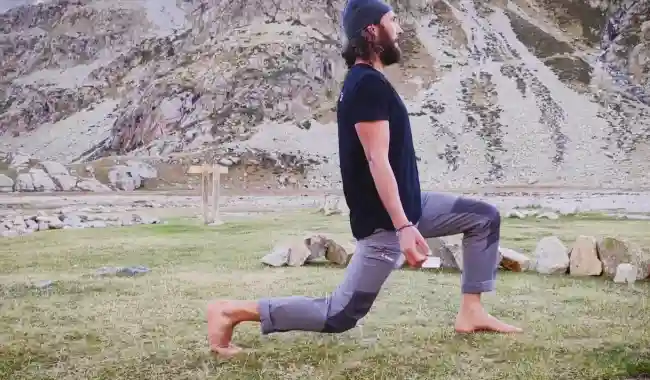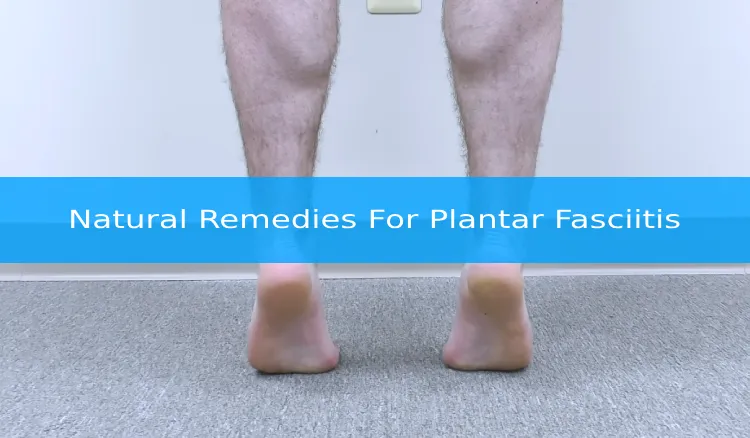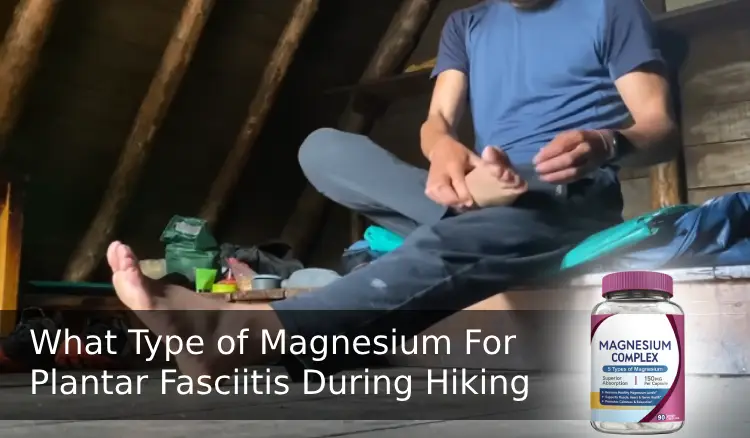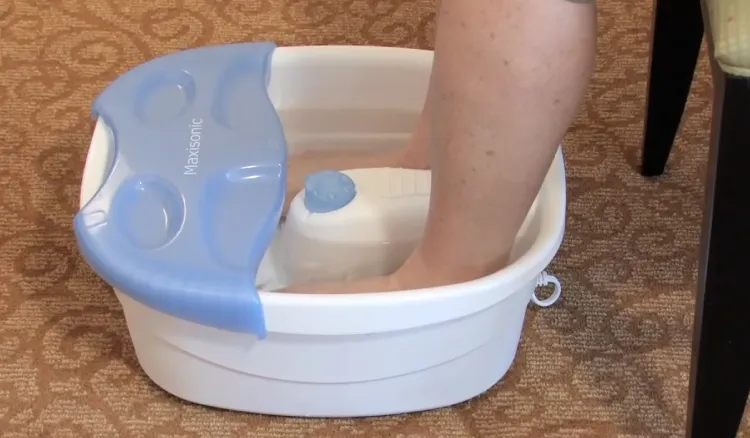Hiking through picturesque trails is an exhilarating way to connect with nature and stay active, but for those with plantar fasciitis, the pleasure of hiking can be dampened by foot pain. To your relief, natural remedies can help alleviate the symptoms of plantar fasciitis and let you enjoy hiking again.
To keep your feet flexible, you can maintain regular stretching routines for your calf muscles, Achilles tendon, and plantar fascia. Also, you can use ice therapy to reduce inflammation, and heat therapy to relax muscles can relieve plantar fasciitis symptoms.
We’ll explore twelve effective natural remedies for hikers who suffer from plantar fasciitis. So keep reading and explore how to enjoy hiking while managing your plantar fasciitis with these natural remedies.
12 Natural Remedies for Plantar Fasciitis When Hiking Trails

Plantar fasciitis can cause intense pain in the heel and arch of your foot, making it difficult for you to walk or even stand. But don’t let plantar fasciitis ruin your hiking fun by following these natural remedies:
- Proper footwear selection
- Orthotic inserts
- Maintain stretching routine
- Self-massage and foam rolling
- Apply ice and heat therapy
- Strengthening exercises
- Low-impact activities
- Gradual increase in activity
- Utilize trekking poles
- Take proper nutrition and hydration
- Rest and recovery
- Foot elevation after hiking
Let’s discuss these in detail:
1. Proper Footwear Selection
Choosing the proper hiking shoes for plantar fasciitis is crucial, so opt for ones that offer arch support, cushioning, and stability. When dealing with plantar fasciitis, prioritize the comfort and support of your feet.
Look for hiking shoes with a supportive midsole that helps maintain the natural arch of your foot. This will help reduce strain on the plantar fascia and alleviate pain.
Also, cushioning is essential to absorb shock and provide extra comfort during your hikes. Ensure you look for shoes with ample padding in the heel and forefoot areas.
Hiking shoes with a firm heel counter and a secure lacing system will provide the necessary stability to prevent excessive foot movements and further aggravation of plantar fasciitis.
2. Orthotic Inserts
Consider using orthotic inserts or insoles to provide extra arch support and cushioning for hiking. They help distribute pressure evenly and alleviate stress on the foot.
Orthotic inserts are specifically designed to address the needs of individuals with plantar fasciitis. They offer targeted support to the arch of the foot, reducing the strain on the plantar fascia and providing relief from pain.
These inserts also help to absorb shock and impact, protecting your feet from the repetitive stress that can worsen plantar fasciitis symptoms. Also, orthotic inserts can improve your overall foot alignment and stability, reducing discomfort during hiking.
3. Maintain Stretching Routine
Incorporating a regular stretching routine will help maintain foot flexibility and keep the muscles and fascia supple while hiking. You can prevent plantar fasciitis from worsening or recurring by focusing on stretches for the calf muscles, Achilles tendon, and the plantar fascia itself.
Calf stretches can be done by standing near a wall and leaning forward with one leg extended behind you, while arch stretches involve sitting on a chair and using a towel to pull your toes towards you.
Remember to gently perform these stretches and hold each for about 30 seconds. Incorporating a stretching routine into your daily routine can be an effective natural remedy for plantar fasciitis.
4. Self-Massage and Foam Rolling
Take care of your feet while hiking using a foam roller or tennis ball to self-massage, reduce muscle tension, improve blood circulation, and promote healing. Here are some benefits of self-massage and foam rolling for your feet:
- Breaks up knots and adhesions in the muscles, relieving tightness and discomfort.
- Increases flexibility and range of motion in the foot and ankle, allowing for better movement and decreased risk of injury.
- Stimulates blood flow to the area, delivering oxygen and nutrients to the muscles and tissues, aiding in healing.
- Releases endorphins, the body’s natural painkillers, providing a sense of relaxation and reducing pain.
5. Apply Ice and Heat Therapy (if applicable)
Ice therapy, also known as cryotherapy, can help reduce inflammation and alleviate pain in your feet. Applying ice packs or soaking your feet in cold water can constrict blood vessels, decrease swelling, and numb the area.
Alternatively, heat therapy can relieve your muscles before or after a hike. Soaking your feet in warm water or using warm compresses can increase blood flow, promote healing, and ease discomfort.
6. Strengthening Exercises

Try toe curls, towel pickups, and resistance band exercises to strengthen your lower legs and feet. These exercises effectively target the muscles in your lower legs and feet and provide a great way to prevent and alleviate plantar fasciitis while hiking.
Here are four exercises you can incorporate into your routine:
- Toe curls: Sit on a chair with your feet flat. Slowly curl your toes, gripping the floor, and then release. Repeat this exercise for 10-15 reps.
- Towel pickups: Place a towel on the floor and use your toes to grip and lift it up. Hold for a few seconds, then release. Aim for 10-15 reps on each foot.
- Resistance band activities : Hold onto the ends of a resistance band and wrap it around your foot. Flex your foot against the band’s resistance, then release. Repeat for 10-15 reps on each foot.
- Calf raises: Stand with your feet hip-width apart and slowly raise onto your tiptoes, then lower back down. Repeat for 10-15 reps.
7. Low-Impact Activities
When hiking with plantar fasciitis, choosing low-impact activities that won’t aggravate the condition is crucial. Although hiking can be challenging for individuals with plantar fasciitis, plenty of low-impact activities can provide cardiovascular benefits without putting stress on the feet.
Some excellent low-impact options include yoga or swimming, which can help maintain overall fitness levels while allowing the plantar fascia to recover.
8. Gradual Increase in Activity
Start by gradually increasing the intensity and duration of your hikes to allow your body and feet to adapt without overstraining. This method is crucial in managing plantar fasciitis effectively. Here are some important tips to consider:
- Start with shorter distances and flatter terrains before progressing to more challenging trails.
- Listen to your body and take breaks to prevent overexertion and potential injury.
- Incorporate stretching exercises for your calves, Achilles tendon, and plantar fascia to improve flexibility and reduce strain.
9. Utilize Trekking Poles
Using trekking poles can provide added stability and support for hiking, reducing strain on your feet and helping to manage the symptoms of plantar fasciitis. When you have plantar fasciitis, every step can be painful and challenging.
By using trekking poles, you can distribute your weight more evenly, reducing the impact on your feet and relieving pressure on your plantar fascia. These poles act as an extra set of legs, allowing you to engage your upper body muscles and take some of the load off your feet.
They also provide stability, helping you maintain balance and preventing slips and falls. Whether hiking on uneven terrain or simply going for a walk, utilizing trekking poles can be a valuable tool in managing the discomfort of plantar fasciitis and allowing you to continue enjoying outdoor activities.
10. Take Proper Nutrition and Hydration
Maintaining healthy feet is important to nourish and hydrate your body properly. Nutrition and hydration play a crucial role in foot health. Here are some key tips to ensure you’re taking proper care of your feet:
- Include anti-inflammatory foods such as turmeric, ginger, and leafy greens in your diet. These foods can help manage inflammation and pain associated with plantar fasciitis.
- Stay hydrated throughout the day by drinking sufficient water. Proper hydration is essential for maintaining healthy tissues and preventing foot problems.
- Avoid excessive consumption of sugary and processed foods, as they can contribute to inflammation and foot issues.
- Incorporate foods rich in calcium, vitamin D, and magnesium to support strong bones and prevent conditions like stress fractures.
11. Rest and Recovery
Rest and recovery are crucial in managing plantar fasciitis during hiking. This condition occurs when the plantar fascia, the ligament that connects your heel to your toes, becomes inflamed and irritated.
Giving your feet enough rest allows the inflammation to subside and promote healing. It is important to avoid activities that exacerbate the pain and to take regular breaks from standing or walking for long periods.
You can try gentle stretching exercises and apply ice to reduce inflammation. Also, wearing supportive footwear and using orthotic inserts can help relieve pressure on the plantar fascia, aiding in recovery.
12. Foot Elevation After Hiking
After hiking, you can elevate your feet on a pillow or cushion to reduce swelling and encourage blood circulation. This simple and effective remedy can relieve tired and achy feet. Here are some benefits of foot elevation after hiking:
- Reduces swelling: Elevating your feet above your heart’s level helps drain excess fluid and reduce swelling in your feet and ankles.
- Improves blood circulation: Elevating your feet allows gravity to assist in blood circulation back to your heart, promoting better overall blood flow.
- Alleviates pressure: Propping your feet up on a pillow or cushion helps relieve pressure, reducing discomfort and pain.
- Speeds up recovery: Foot elevation after hiking can aid recovery by reducing inflammation and promoting faster healing.
Is it OK to hike with plantar fasciitis?

It’s not advisable to hike with plantar fasciitis as it can worsen the inflammation and re-injure the plantar fascia. The repetitive motion and impact of hiking can strain the already weakened and inflamed plantar fascia, leading to increased pain and potential long-term damage.
Hiking with plantar fasciitis can also delay healing and prolong your recovery. Resting your feet properly and allowing the inflammation to subside before engaging in any strenuous activity like hiking is important.
Instead, focus on implementing natural remedies such as stretching exercises and wearing supportive footwear to reduce inflammation. These measures will help alleviate pain and promote healing, allowing you to get back on the hiking tracks safely and without exacerbating your plantar fasciitis.
How do I stop my heels from hurting when I hike?
If you’re experiencing heel pain while hiking with plantar fasciitis, there are several ways to alleviate the discomfort and continue enjoying the great outdoors. Here are four steps that can help stop your heels from hurting:
- Rest: Take breaks during your hike to give your feet a chance to recover.
- Apply ice: After your hike, apply ice to your heels for 15-20 minutes to reduce inflammation.
- Footwear Modifications: Modify hiking shoes or boots with good arch support and cushioning to relieve your heels.
- Utilize Custom Orthotics: Consider using custom-made shoe inserts to provide additional support and alleviate pressure on your heels.
Is hiking barefoot good for plantar fasciitis?
Avoiding hiking barefoot when you have plantar fasciitis is important to alleviate discomfort and prevent further pain. Hiking barefoot can worsen the condition by putting excessive strain on the plantar fascia, the thick band of tissue that connects your heel to your toes.
Without proper support and cushioning, the impact of each step can cause inflammation and micro-tears in the fascia, leading to increased pain and inflammation.
Instead, opting for shoes with a rocker bottom or a thick midsole is recommended. These features provide the necessary cushioning and rigidity to support your foot arch and reduce stress on the plantar fascia.
What shoes should you not wear with plantar fasciitis for hiking?
Avoid wearing flat slip-on shoes, pumps, and Ugg boots while hiking with plantar fasciitis, as these can worsen your condition and cause additional strain on your feet. Instead, opt for shoes that provide proper support and cushioning.
Here are some shoe options that are more suitable for hiking with plantar fasciitis:
- Hiking boots: Look for boots with good arch support and cushioning in the heel. These will help to reduce the impact on your feet and provide stability while hiking.
- Trail running shoes: These shoes are designed to provide support and stability on uneven terrain. They often have cushioning in the heel and arch support.
- Orthotic shoes: Consider investing in orthotic shoes or shoe inserts specifically designed to support the arch of your foot and relieve plantar fasciitis.
Can compression socks help with plantar fasciitis?
Wearing compression socks can help improve blood flow and reduce swelling, relieving plantar fasciitis. Compression socks work by applying gentle pressure to your feet and calves, which helps to stimulate blood circulation and reduce inflammation.
This increased blood flow can help to alleviate the pain and discomfort associated with plantar fasciitis. Also, compression socks can help reduce swelling in the feet and ankles, a common symptom of this condition.
Experience the Great Outdoors without Plantar Fasciitis Holding You Back
Don’t let plantar fasciitis prevent you from enjoying the great outdoors. Natural remedies such as proper footwear, stretching routines, and strengthening exercises can help relieve pain, increase flexibility, and prevent further damage.
Incorporating these remedies, paired with a balanced diet, hydration, and proper rest and recovery, will help you enjoy hiking trails without worrying about the discomfort of plantar fasciitis.
Remember, the key to managing plantar fasciitis is taking care of your feet, and with these natural remedies, you’ll be on your way to happier and healthier hiking experiences.




Leave a Reply